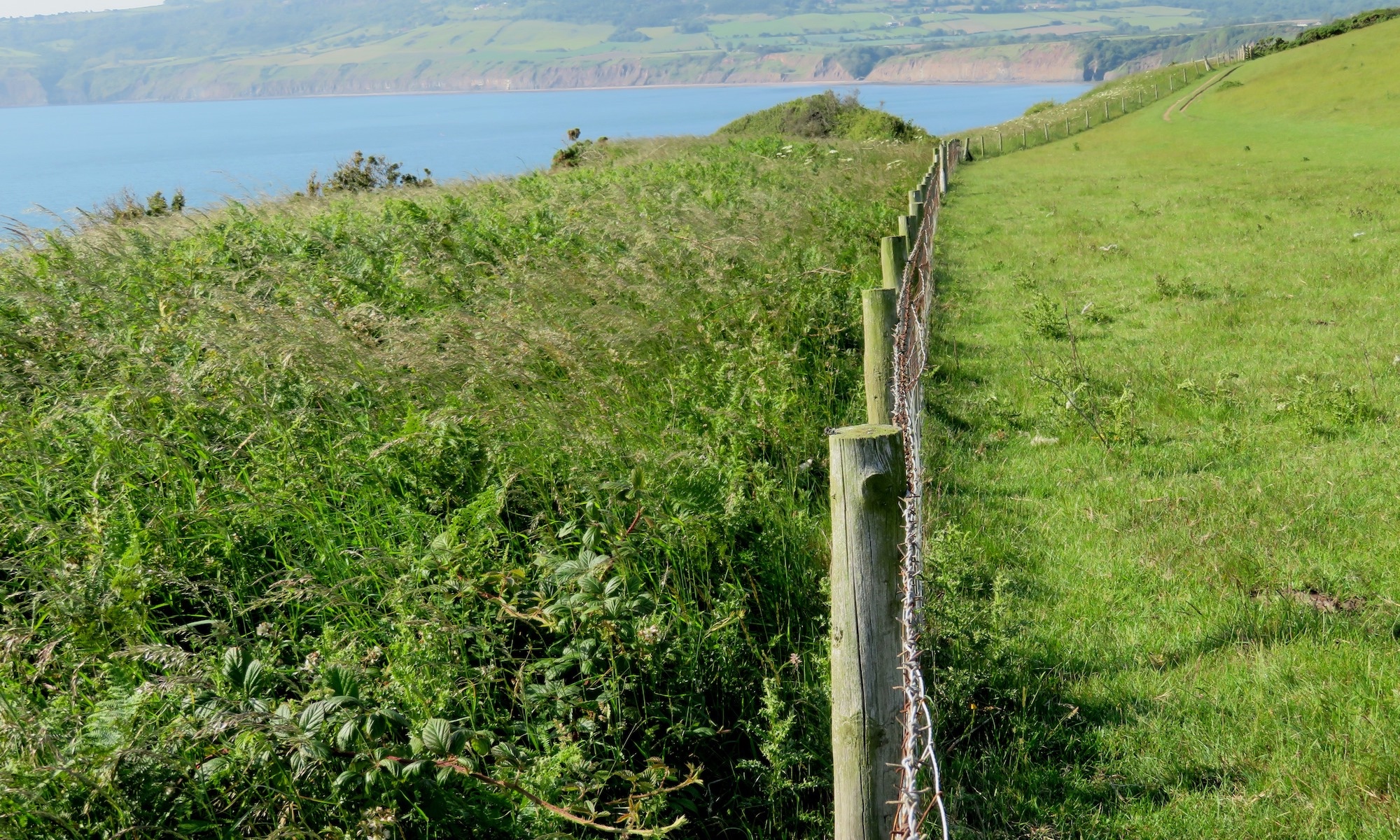By Evan Jeffries
20th March 2025
When Gordon Eastham started working as a groundsman at York University 30 years ago, he had no idea what his job would become. ‘I’m very lucky to have been in the right place at the right time, and being part of all this from scratch has been a huge privilege,’ he says.
Take a trip to York University, have a wander round the East Campus, and you’ll understand why.
Gordon is the university’s Grounds and Ecology Manager, and for nearly two decades he’s been at the heart of a unique and hugely ambitious rewilding project – one which has transformed a greenfield building site used by thousands of people every day into a thriving new landscape, harbouring a mosaic of natural habitats and nurturing increasingly rich biodiversity.

I paid Gordon a visit just as the first signs of spring – a drift of crocuses here, a burst of birdsong there – were finally creeping through after a winter that felt like it had been going on way longer than it had any right to. He’d kindly offered to show me round the campus, and it was a beautiful day for it.
There’s been a university campus at Heslington on the margins of York since 1963. Its design – featuring landscaped parkland, a central lake and a clever network of covered walkways – was highly innovative at the time, and parts of the original campus have since been listed by Historic England. It has aged well, too, the grounds lovingly maintained by Gordon and his team.
But I’d come to see something else. The original campus is now known as Campus West: rewilding enthusiasts should head across the road to Campus East, which in its way is just as radical and groundbreaking as the university’s original development in the 1960s. And while not many of us will get the chance to be part of a rewilding project on the scale that’s taking place here, we can all learn something from it.
In 2008, the future Campus East was 116 hectares of arable farmland on the estate of Lord Halifax. When plans to build a £750 million extension to the university on it were announced, there was a lot of local opposition, with residents angry at the prospect of open fields covered in tarmac, and eyesore buildings blocking a peaceful (if rather boring) pastoral view – and you can understand their point of view. At the time, the idea that a construction project on this scale could end up as a net positive for nature would have seemed crazy – but this was one of the non-negotiable conditions under which it was given the green light.
And it worked. Today, as you walk around Campus East, it’s hard to believe anyone was against this visionary initiative. What was once flat, sterile fields crisscrossed with drainage ditches is now a varied undulating landscape filled with young woods, wildflower meadows, extensive wetlands and a 10-hectare lake stretching 1,200m end to end. Looking towards the site from the residential area across the way, you’d have no idea it also contains a complex of buildings used by thousands of people every day, a stream in the lifeblood of the city. And when you’re in the buildings, all you can really see beyond them is nature.
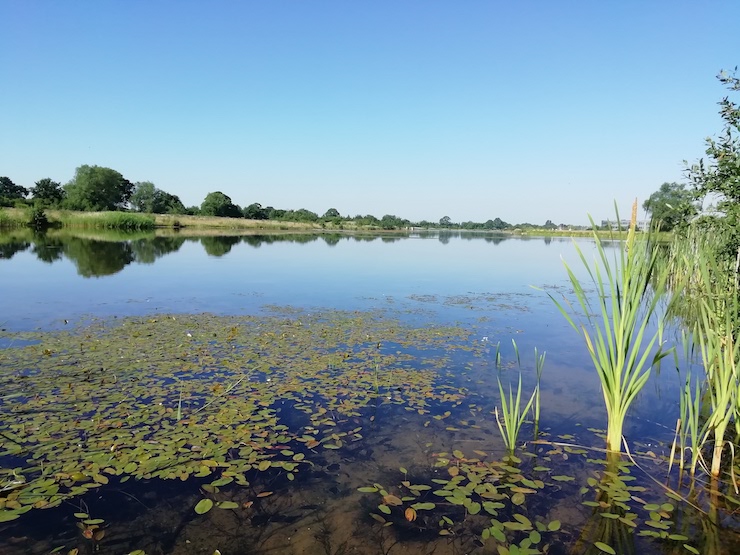
The three Ws
‘It’s all about the three Ws – water, woodlands and wildflower meadows – and how they connect across the landscape,’ says Gordon when I ask how on earth you plan and execute a project like this.
That involved a lot of initial topographical work while the buildings complex was being constructed, digging out the lake basin and using the earth from the excavations to form the surrounding terrain into a network of new areas, with the three Ws everywhere you look.
It’s the first of those Ws, water, that makes the biggest impression when you visit. The main lake at Campus East – 3.5 m at its deepest – runs along one side of the site, taking up nearly a tenth of the total area, and it has clearly already become a significant wetland for local wildlife. Wading birds dot the shoreline, ducks and a couple of cormorants are bobbing further out; little egret and goosander are two of the more interesting recent visitors Gordon mentions. A pair of tern rafts are moored in the distance, and there are vertical nesting boards for sand martins. Fish – including some big pike – have colonised the lake unassisted, as have a wide array of plants – the reeds, orchids, willows and elder on the margins are all self-seeded.
A wealth of other wetlands spreads across the site, with ponds and scrapes offering a patchwork of possibilities for biodiversity – although one area planned as a flooded field has since become an ‘accidental’ lake, filling up as the water found its natural level.
In the central built-up area you notice a prevalence of porous surfaces. There are no stone gullies by the roads and walkways – instead, water is allowed to seep naturally into wide shallow ditches known as ‘swales’. From the swales, the water drains down to be pumped through a series of Norfolk reed beds and ultimately into the lake. Reeds thrive here, and they’re an important part of the water filtration system, naturally leaching out nutrients and preventing algal blooms.
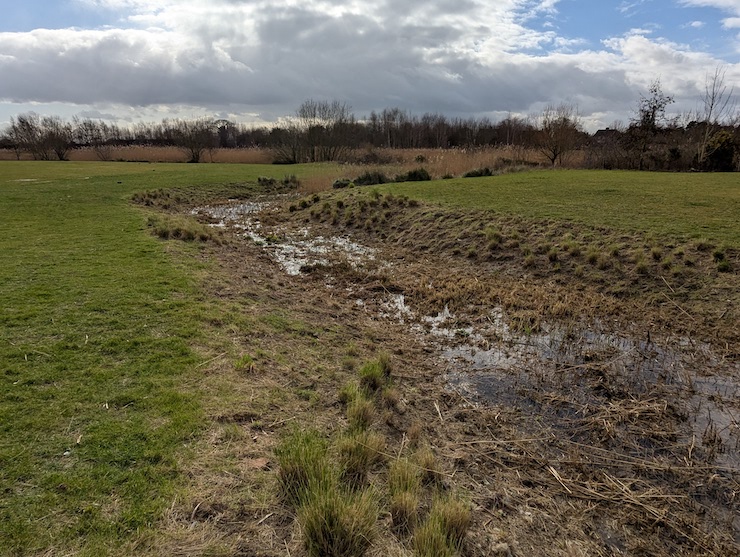
These swales fill with vegetation in the summer, creating their own mini ecosystems. Last year, when Gordon and some students were planting out wildflower plugs in one of the central swales, a stoat appeared right in front of them to snatch away one of the many rabbits that hop lazily around the place.
Predators notwithstanding, those rabbits are onto a good thing. Campus East offers them a tempting range of habitats, from open meadows of mixed native wildflowers for grazing, to areas of scrub and gorse for cover. They live alongside a healthy hedgehog population, which is supported by woodpiles, feeding stations and hibernaculums – the campus recently received a Platinum award for its hedgehog-friendliness, which is as good as it gets in the world of hedgehog conservation. The ‘Creatures on Campus’ group also maintains dozens of nest boxes, and bat boxes too.
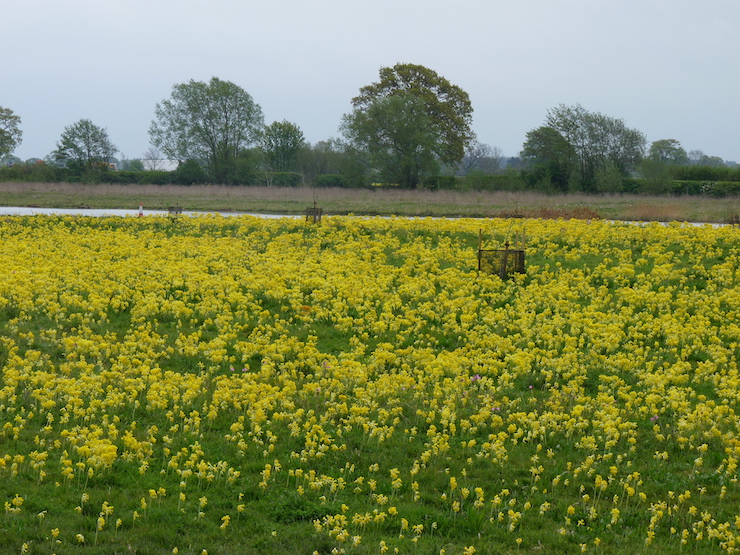
Seeing the wood for the trees
And then, of course, there are the trees. Even the smallest of rewilding projects tends to involve some tree-planting, and here on Campus East it’s been done on a grand scale: some 70,000 trees and shrubs are growing today in 15 separate woodland blocks. ‘We started planting 15 years ago,’ says Gordon. ‘The woods have a mix of 25 different native species, and there’s been a very high success rate: 85 to 90% of them have survived.’
At this point, the young trees don’t need much in the way of management, although Gordon and the team are remembering to systematically clear tree guards as the woods mature. When anything does need cutting, the dead wood stays on site, still part of the ecosystem.
The largest plantation on Kimberlow Hill – a patch of some 25,000 trees – was chosen by the Woodland Trust as one of 60 ‘Diamond Woods’ to mark Queen Elizabeth’s Jubilee in 2012. It’s worth walking up to it if you visit the site, both to see how quickly this new mixed deciduous woodland is establishing itself, and also so you can look back down across the rest of the campus to take in the scale and scope of what’s been achieved here in so short a time – or rather to see what nature has achieved, with a little help from people like Gordon.
Right now, that campus will be bursting into new spring life, with blossom, young leaves and the masses of bulbs in the verges and traffic islands in their full glory. ‘We put in more every autumn,’ Gordon explains. ‘Narcissi, camassia – successional planting will keep them flowering continuously through till early May, which is great for bees and pollinators.’
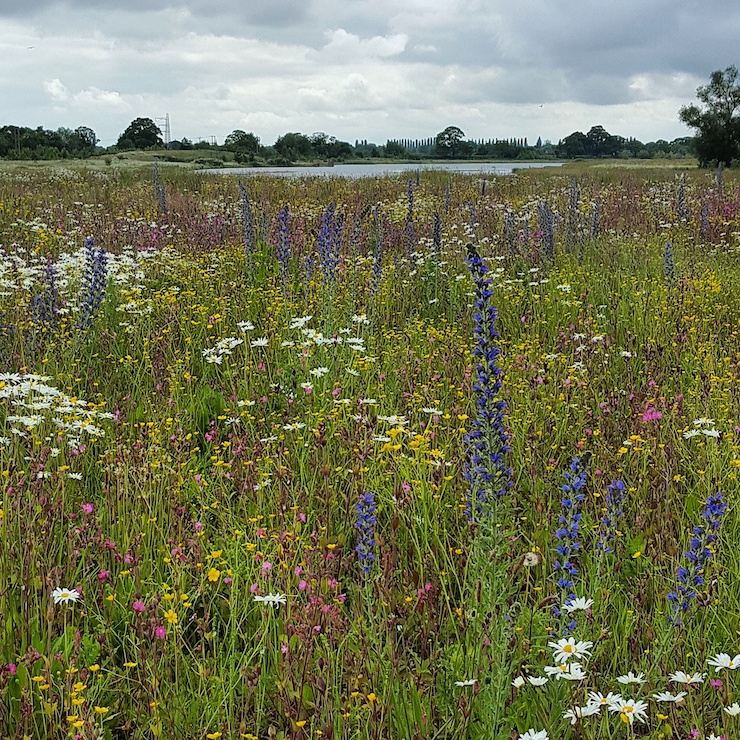
Nature nurtures
Those bees will be busily buzzing through wildflowers all summer long, in meadows criss-crossed by desire lines – that lovely term for informal, unplanned paths – traced by the feet of students and locals alike, who are encouraged to use this whole space as a resource. Getting out into nature is so important for physical, mental and spiritual health, as YRN members will already know.
‘It’s also a living lab for the students,’ points out Gordon. ‘The Biology and Environment departments use the grounds for teaching and research; very few universities have anything like this. It’s definitely a selling point for people interested in coming here – whether they want to study nature, or just love being in it.
‘I hope what we’ve done here will inspire other places to have a go themselves,’ he goes on. ‘Mental health is particularly important for our young people after everything they’ve been through in the last few years, and spending time in nature definitely helps with that’. I couldn’t agree more, and I’m sure everyone reading this thinks so too.
Gordon’s time at York is drawing to a close, with retirement beckoning at the end of the year. But the future of the campus is still his business, and he’s as busy as ever.
‘I’ve been thinking about habitat creation for specific species,’ he says. ‘Maybe coppicing an area of trees to attract willow tits – or marsh tits, if there are no willow tits locally.
‘It just draws you in – I feel personally invested, and very, very protective of what we’re doing here.’
After a single visit to this successful, flourishing site, I care about it too, and I’m certainly going to return later in the year to enjoy it in its summer splendour.
As I say my goodbyes, I clumsily try to express to Gordon how much I admire and respect what he’s achieved, and how I love the idea of him being here from the beginning, watching the incremental changes day by day as they slowly coalesce into something utterly transformed – and transformative.
When Gordon protests that ‘It’s not my vision, I’m just doing my job,’ the ‘just’ in that sentence is doing a lot of heavy lifting. What he’s too modest to say – but what anyone with eyes can see, and what anyone with a heart will feel – is that he’s leaving behind him a unique living legacy, one that will touch and enrich lives without number in the years to come.
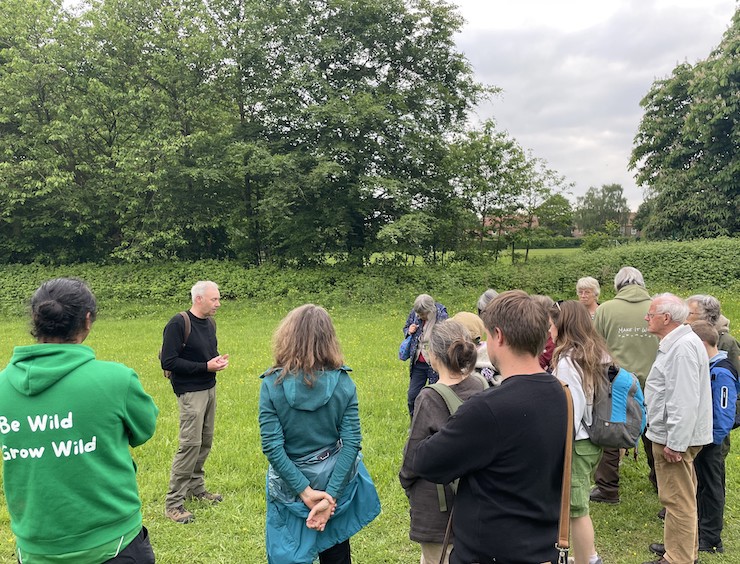
Image credits: Gordon Eastham, Evan Jeffries, Sarah Mason
